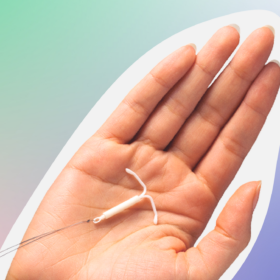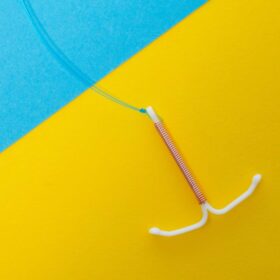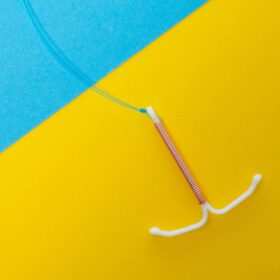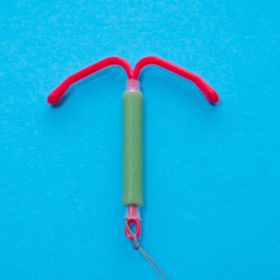
IUS vs IUD – what’s the difference and which is best?
In this article
What's the lowdown?
The IUD is a non-hormonal alternative to the IUS – it releases copper rather than the hormone progestogen to prevent pregnancy
Both the IUS and IUD are T-shaped coils that are inserted into the womb by a training healthcare professional
Each can last between 3 – 10 years depending on the brand and are both 99% effective
The IUD tends to cause heavier periods initially whereas the IUS can make periods lighter or stop them altogether
We know that contraception can be a confusing one, and when it comes to the coil – it’s certainly no exception. From IUD to IUS, no wonder we’re all left rubbing our heads when it comes to decision time. The main difference between the two is their makeup and how they work in the body.In this article we will outline the key differences in the IUS vs the IUD to help you decide which contraceptive coil is right for you.
What is an IUD/IUS?
The coil is a small T-shaped device made mostly of plastic, that is inserted into the uterus to act as contraception. There are two types of coil to choose from, the Intrauterine Device (IUD), which releases copper and Intrauterine System (IUS) which releases a hormone called progestogen, but both work to prevent pregnancy.
Both types of contraceptive coils must be inserted by a trained healthcare provider and can last anywhere between three to ten years, depending on which type or brand and can be easily removed at any time. The Mirena coil is a popular brand of IUS coil – check out our comparison of the Mirena vs the Copper coil for more info.
How do the coils work?
The main difference between the IUD and IUS is how they prevent pregnancy.
The IUD is a copper coil (non-hormonal coil) that prevents pregnancy by blocking sperm from reaching the egg. It does this by releasing tiny amounts of copper into the body, which are ‘toxic’ for both sperm and eggs.
Due to the presence of the copper, the sperm cannot survive in the cervix or the womb and therefore cannot reach the egg. It can also delay the egg from reaching the womb. If the sperm and egg did meet, the presence of the copper IUD prevents a fertilised egg from implanting in the lining of the womb, therefore preventing pregnancy.
Check out our copper IUD reviews on The Lowdown website.
The IUS is a hormonal coil that prevents pregnancy through releasing the hormone progestogen into the womb, that works by thickening the cervical mucus to prevent the sperm entering your reproductive tract and thinning out the womb lining so an egg can’t implant to grow into a pregnancy.
The IUS can also stop ovulation for some people (around 25%), while for others ovulation will continue as usual.
How hormones in the IUS work
Different to the contraceptive pill or other forms of contraception, the hormones in the IUS are thought to act more locally, which means they are concentrated in the womb, with lower levels of progestogen in the blood.
This means the hormones may be less likely to cause negative symptoms, such as mood changes, that may occur with other hormonal contraceptive methods – this could be why it’s one of our community’s most popular forms of birth control!
IUS and IUD insertion
It’s always good to arrange an appointment with your doctor before getting the IUD or IUS fitted so you can discuss which one would be best suited to you.
Both the IUD and IUS need to be inserted by a trained healthcare provider. Before fitting, they may carry out some simple tests, including:
- Checking the size and position of your womb
- Checking for an possible STIs and treating with antibiotics
- A pregnancy test
The entire appointment takes around 15-20 minutes but the actual insertion is often much quicker. The vagina will be held open with a small speculum, the same way as it is during a smear test, and the coil is inserted through the cervix into the womb. Your healthcare provider will use local anaesthetic to make this more comfortable.
Occasionally, some clinics recommend a check up six weeks after insertion to check the coil and review any problems. You should be taught how to check your coil is in place by feeling the fine threads which hang down from the cervix into the top of the vagina. If you’re confident doing this you don’t always need to attend a check up appointment.
IUS and IUD removal
It’s good to know that the coil can be removed at any time – but this must be done by a doctor or nurse so you’ll need to make an appointment. Your normal fertility should return immediately once the coil has been removed. If you don’t wish to get pregnant and have had sex in the last 7 days, your doctor may advise you to delay removing your coil, depending on whether you are stopping or switching contraception. The removal procedure is usually simple and quicker than when inserted. It is removed by your doctor or nurse by gently pulling on the threads, making the T shape fold up and allowing it to be easily pulled out of the womb.
Benefits of the IUD and IUS
- You don’t have to worry about remembering your contraception every day or every time you have sex
- You don’t have to think about it until it is time for it to be replaced, this can be between 3 to 10 years depending on the coil type
- The IUD is effective as soon as it’s been fitted, the IUS can be effective immediately if fitted within the first 7 days of the start of your menstrual cycle (Otherwise it takes 7 days after fitting to be effective against pregnancy during which time you’ll need to use additional contraception such as condoms)
- Normal fertility returns once it has been removed
- Both coils are safe to use while breastfeeding
- Neither coil is affected by other medicines in the way that other forms of contraception like the pill might be
IUS vs IUD: your period
The way the coil affects your period is different for individual women, and will depend on the type of coil fitted.
- The IUD may cause heavier periods that may last longer in the first few months, but not always.
- Periods with the IUS are usually lighter, shorter and less painful. The IUS can cause irregular bleeding, often light irregular spotting or sometimes stop periods altogether. This is not harmful at all but can take some time getting used to.
Side effects of the IUS and IUD
- You may get light bleeding and tummy cramps for a few days after the coil is fitted. If you feel unwell, have severe lower tummy pain, smelly or green discharge, or other concerns, go back to the clinic where your coil was fitted or contact your doctor
- Side effects with the IUS can include acne, breast tenderness or headaches but these usually settle after a few months
- Some women report vaginal discharge
IUD vs IUS… what do the reviews say?
“Except for heavier periods, I am so happy to have found a non-hormonal and worry-free contraceptive that allows me to have a natural cycle.” – IUD”Still fairly new to this method, but I swapped from the copper coil and it’s been a massive relief in that my periods are no longer extremely heavy and I don’t have raging mood swings (or ones that are as bad, at least)” – IUSCheck out our IUS reviews and IUD reviews at The Lowdown. You can also listen to our podcast on the hormonal IUS here. Our Co-Founder Alice talks to Edinburgh based GP Dr Rachel Cooper on how she fits them and her good friend Rose on what it’s like to have one. Want to compare more methods? Put every contraceptive to the test in our brand new Contraception Comparison tool where you can compare side effects, effectiveness and reviews for the pill, patch, coil and more. You can also try out our contraception recommender if you don’t think the IUD or IUS will suit you best.
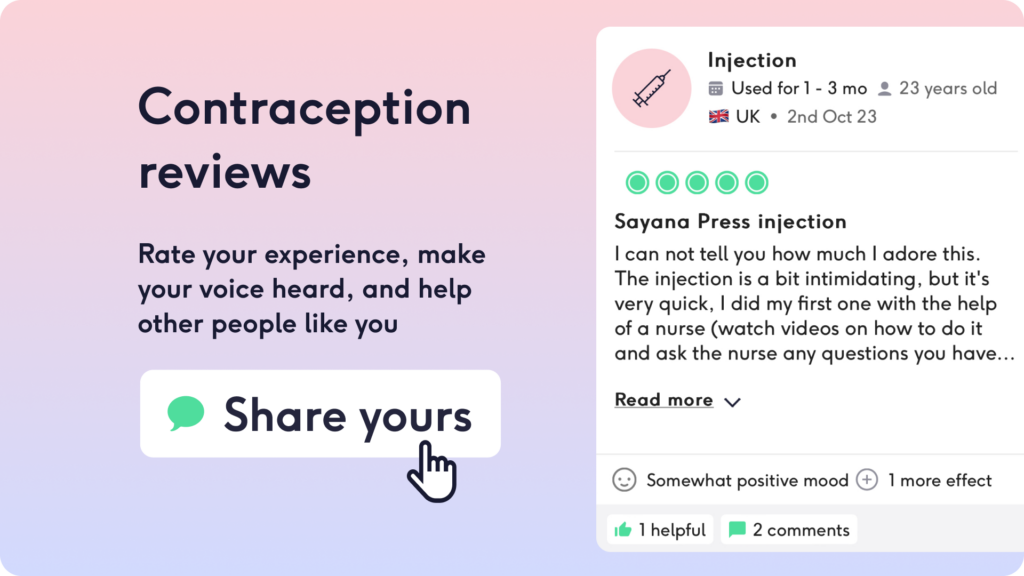
Our medical review process
This article has been medically reviewed for factual and up to date information by a Lowdown doctor.



